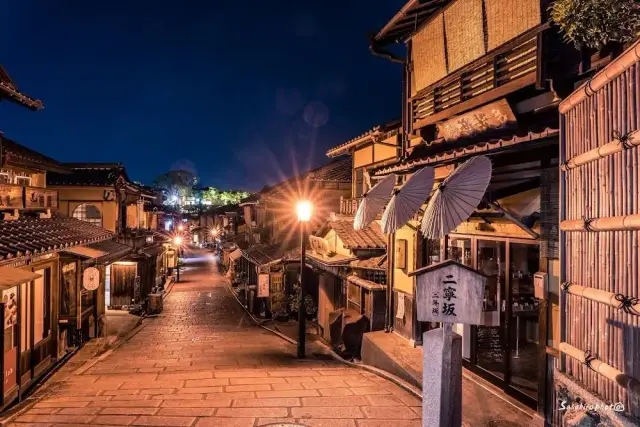https://www.dekitabi.com/itinerary/gion-essential-walking-tour
Kyoto, the ancient capital of Japan, is a city brimming with cultural treasures and historical landmarks. Among its many enchanting sites, Gion Tatsumi Bridge, Hanamikoji Street, Yasaka Jinja, Kodaiji Temple, Nineizaka, Sanneizaka, and Kiyomizu-dera stand out as must-visit destinations. This guide explores these iconic locations, offering insights into their history, significance, and unique charm.
Gion Tatsumi Bridge: A Stroll Through History

https://www.dekitabi.com/attraction/gion-tatsumi-bridge
Nestled in the heart of Gion, Kyoto’s renowned geisha district, Gion Tatsumi Bridge is a picturesque landmark that captures the essence of traditional Japan. The bridge spans the Shirakawa Canal, offering a tranquil setting with its weeping willows and stone-paved paths. Visitors often find themselves transported back in time as they stroll across this charming bridge, which has been featured in numerous films and photographs. The area around Gion Tatsumi Bridge is especially beautiful during cherry blossom season, when the delicate sakura petals create a stunning backdrop for memorable photos.
Hanamikoji Street: The Soul of Gion

https://www.dekitabi.com/attraction/hanamikoji-street
Just a short walk from Gion Tatsumi Bridge lies Hanamikoji Street, a historic thoroughfare that epitomizes the elegance and grace of Kyoto’s geisha culture. Lined with traditional wooden machiya houses, Hanamikoji Street is a place where visitors can witness the timeless beauty of geiko (Kyoto’s term for geisha) and maiko (apprentice geisha) as they glide gracefully to their evening appointments. The street is also home to several exclusive ochaya (tea houses) where these skilled performers entertain guests with their exquisite arts. Hanamikoji Street is best visited in the early evening when the lanterns light up, creating a magical ambiance.
Yasaka Jinja: The Guardian of Gion

https://www.dekitabi.com/attraction/yasaka-jinja-shrine
At the eastern end of Hanamikoji Street stands Yasaka Jinja, a vibrant Shinto shrine that has been a spiritual cornerstone of Kyoto for over 1350 years. Also known as Gion Shrine, Yasaka Jinja is famous for its annual Gion Matsuri, one of Japan’s most celebrated festivals. The shrine’s vivid vermilion gate and intricate architecture are a testament to its historical significance. Visitors can partake in traditional rituals, admire the shrine’s beauty, and enjoy the peaceful surroundings of Maruyama Park, which is adjacent to the shrine. Yasaka Jinja is an essential stop for those seeking to understand Kyoto’s rich religious heritage.
Kodaiji Temple: A Legacy of Elegance

https://www.dekitabi.com/attraction/kodai-ji
Founded in 1606 by Nene, the widow of Toyotomi Hideyoshi, Kodaiji Temple is a Zen Buddhist temple renowned for its exquisite gardens and elegant architecture. The temple complex includes beautifully landscaped gardens designed by the legendary landscape architect Kobori Enshu, featuring a serene pond, a bamboo grove, and meticulously raked gravel gardens. The temple’s main hall and tea houses, adorned with intricate lacquer work and gold leaf, reflect the refined taste of the Momoyama period. Kodaiji Temple also offers night-time illuminations, where the gardens and buildings are bathed in ethereal light, creating an unforgettable experience.
Nineizaka and Sanneizaka: Charming Historical Streets

https://www.dekitabi.com/attraction/ninenzaka
https://www.dekitabi.com/attraction/sannenzaka
Nineizaka and Sanneizaka are two of Kyoto’s most famous sloping streets, leading up to the iconic Kiyomizu-dera Temple. These pedestrian-only lanes are lined with well-preserved traditional buildings, housing quaint shops, cafes, and restaurants. Visitors can explore a variety of artisanal crafts, local snacks, and souvenirs while enjoying the nostalgic atmosphere of old Kyoto. The stone-paved streets, with their gentle slopes and historic charm, offer a delightful walking experience. Both Nineizaka and Sanneizaka are also known for their seasonal beauty, particularly during cherry blossom and autumn foliage seasons, making them perfect spots for capturing Kyoto’s timeless allure.
Kiyomizu-dera: A Temple with a View

https://www.dekitabi.com/attraction/kiyomizu-dera
Perched on the hillside of Mount Otowa, Kiyomizu-dera is one of Kyoto’s most celebrated temples, offering breathtaking views of the city and surrounding landscapes. Founded in 780, this UNESCO World Heritage site is renowned for its wooden stage that juts out from the main hall, supported by hundreds of wooden pillars. This architectural marvel allows visitors to gaze over the lush treetops and the cityscape beyond. The temple complex includes several other significant structures, such as the Jishu Shrine, dedicated to the deity of love, and the Otowa Waterfall, where visitors can drink from its three streams, believed to grant longevity, success, and love. Kiyomizu-dera is especially popular during the spring cherry blossoms and autumn leaves, when the temple grounds are illuminated, offering a magical evening experience.
Conclusion
Exploring Kyoto’s historical and cultural sites like Gion Tatsumi Bridge, Hanamikoji Street, Yasaka Jinja, Kodaiji Temple, Nineizaka, Sanneizaka, and Kiyomizu-dera offers a journey through Japan’s rich heritage and timeless beauty. Each location provides a unique glimpse into Kyoto’s past and present, making them indispensable stops for any visitor seeking to experience the true essence of this captivating city. Whether you are wandering through Gion’s geisha district, partaking in rituals at Yasaka Jinja, or admiring the panoramic views from Kiyomizu-dera, these sites collectively showcase the enduring charm and cultural significance of Kyoto.


Leave a Reply